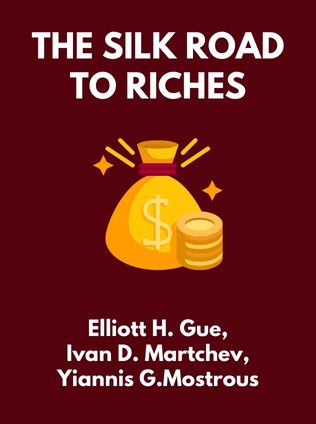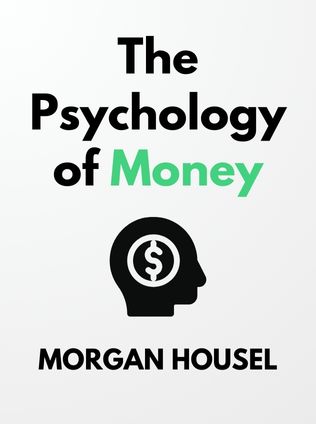
The Silk Road to Riches
How You Can Profit by Investing in Asia’s Newfound Prosperity
By Elliott H. Gue, Ivan D. Martchev, Yiannis G. Mostrous
Published 01/2006
About the Author
The authors of The Silk Road to Riches are Yiannis G. Mostrous, Elliott H. Gue, and Ivan D. Martchev. Yiannis G. Mostrous is an associate editor of Wall Street Winners and holds an MBA from Marymount University. Elliott H. Gue is the editor of The Energy Strategist and holds a BS degree in Economics and Management and a Master's in Finance from the University of London. Ivan D. Martchev is the editor of Wall Street Winners and holds an MBA in International Business and Finance from the University of Cincinnati. These authors combine their expertise to guide readers on how to profit from Asia's economic growth.
Main Idea
The Silk Road to Riches explores how investors can capitalize on Asia's newfound prosperity. It discusses the economic transformation taking place in Asia and offers strategies for long-term investment in this rapidly growing region. The book provides insights into the forces driving Asia's economic rise and the opportunities it presents for investors looking to benefit from the region's dynamic growth.
Table of Contents
- It Is All About the People
- Asia's Path to Prosperity
- The Great Comparison - The Elephant and the Dragon
- The Risks Investors May Encounter
- Trends of the Future
It Is All About the People
Asia's potential as an economic powerhouse lies in its demographics. The region is home to 3.5 billion people, representing 57.5% of the world's population. This large population, coupled with a high savings rate and an increasing bias towards consumption, positions Asia as a potential engine of global economic growth. Despite historical challenges, the rise of the Asian consumer is set to transform the global economy.
A New Middle Class
A recurring theory throughout history has been that Asia can become the engine of global economic growth. However, many investors have resisted this idea due to Asia's well-documented dependence on exports to Western economies. Traditionally, Asia has been seen as stuck in a volatile boom-and-bust cycle, unable to develop a sustainable, consumer-based economic growth model.
However, the authors argue that a new middle class is emerging in Asia, driven by a large population, high savings rates, and an increasing inclination towards consumption. These factors are creating the conditions for Asia to become a significant driver of global economic growth in the 21st century. This shift in consumer behavior is set to transform the global economy and provide new opportunities for investors.
“A large population with the demographics of a high savings rate, an increasing bias toward consumption, and the fact that the world needs a new growth engine for the 21st century.” – Yiannis G. Mostrous, Elliott H. Gue, and Ivan D. Martchev
Looking Back
Few people appreciate that parts of Asia, especially China, Japan, and India, were on the same economic level as Europe until the end of the 18th century. The economic disparities that developed later led to misunderstandings and misperceptions when the West did business with Asia. During the 1990s, many Asian leaders and businessmen believed there was something unique about Asia that made its economies thrive. However, the authors suggest that the region's success was more the result of good timing than any intrinsic advantage.
The Old East Asia Economic Model
The East Asia Economic Model (EAEM) is based on satisfying the world financial system's demand for cheap labor. This model has created significant surpluses in Asian countries while suppressing domestic demand. Asian economies have relied heavily on exports and foreign direct investment to grow, while accumulating savings that fuel Western consumerism.
This model, however, is unsustainable in the long term. As Asian countries modernize, their populations will demand more resources for themselves, forcing governments to focus more on domestic economies. The authors argue that the next phase of growth will require a shift from an export-driven model to one that emphasizes domestic demand and investment.
“This giant export machine helps Asian countries grow, while the accumulation of savings by the Asian people allows consumers in the developed countries to expand their seemingly insatiable consumerism to unprecedented levels.” – Yiannis G. Mostrous, Elliott H. Gue, and Ivan D. Martchev
Time Is on Their Side - The Demographics of Asia
Asia's demographics are particularly impressive and important. The region has a demographic advantage, with a decreasing dependency ratio and a growing segment of the population in their 30s to 50s, who are high earners and spenders. Lifestyle changes, such as more career-oriented singles and increased workforce participation by women, are also contributing to these demographic shifts.
As urbanization continues, these trends are expected to persist, creating a large and dynamic consumer base. While it will take time for Asia's middle class to catch up to Western standards, the progress so far is promising. Income distribution is improving, which bodes well for future consumption and social stability. However, the region still faces challenges in reforming its financial systems and ensuring sustainable growth through domestic demand.
Sign up for FREE and get access to 1,400+ books summaries.
You May Also Like
Rich Dad Poor Dad
What the Rich Teach Their Kids About Money - That the Poor and Middle Class Do Not!
By Robert T. KiyosakiFreakonomics
A Rogue Economist Explores the Hidden Side of Everything
By Steven D. Levitt and Stephen J. DubnerThe Lean Startup
How Today's Entrepreneurs Use Continuous Innovation to Create Radically Successful Businesses
By Eric RiesWho Moved My Cheese?
An Amazing Way to Deal with Change in Your Work and in Your Life
By Spencer Johnson, M.D.Factfulness
Ten Reasons We're Wrong About the World – and Why Things Are Better Than You Think
By Hans RoslingMake Your Bed
Little Things That Can Change Your Life...And Maybe the World
By William H. McRaven



















